Tucson, AZ Pollen and Allergy Report for Summer 2023
Pollen Allergy Trends in Tucson, AZ
When is pollen lowest in Tucson, AZ?

February
Lowest month total PPM
Avg. PPM
When is pollen highest in Tucson, AZ?

March
Highest month total PPM
Avg. PPM
How does pollen in Tucson, AZ compare to Arizona?
Tucson has a higher average PPM than the state of Arizona.
Tucson yearly avg PPM:
Arizona yearly avg PPM:
How does pollen in Tucson, AZ compare to the USA?
Tucson has a lower average PPM than the USA.
Tucson yearly avg PPM:
USA yearly avg PPM:
Is pollen worse this year in Tucson, AZ?
Spring 2023 was better than spring 2022.
Spring 2023 PPM:
Spring 2022 PPM:
Average PPM in Tucson, AZ
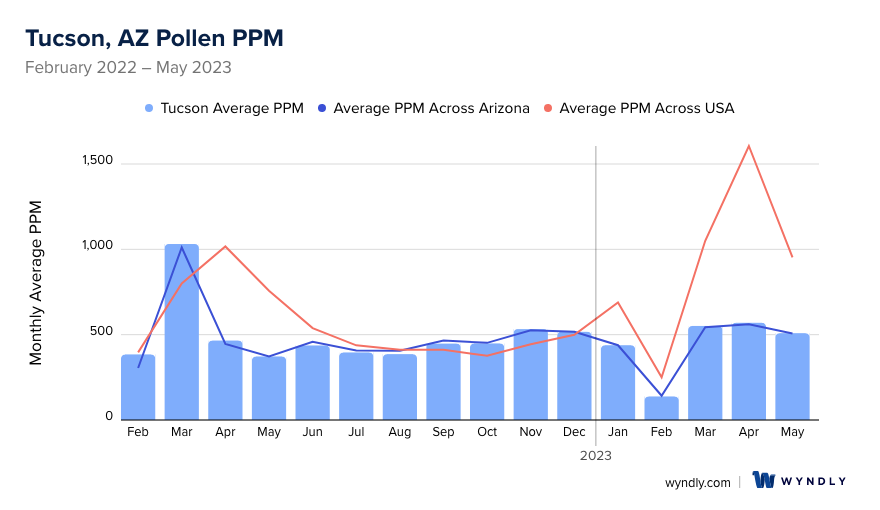

Tucson, AZ Pollen and Allergy Breakdown by Month
Grass
When is grass pollen highest in Tucson, AZ?
May has the highest grass pollen in Tucson, AZ with an average PPM of
When is grass pollen lowest in Tucson, AZ?
December has the lowest grass pollen in Tucson, AZ with an average PPM of
Tree
When is tree pollen highest in Tucson, AZ?
March has the highest tree pollen in Tucson, AZ with an average PPM of
When is tree pollen lowest in Tucson, AZ?
July has the lowest tree pollen in Tucson, AZ with an average PPM of
Weed
When is weed pollen highest in Tucson, AZ?
November has the highest weed pollen in Tucson, AZ with an average PPM of
When is weed pollen lowest in Tucson, AZ?
February has the lowest weed pollen in Tucson, AZ with an average PPM of
Tucson, AZ Pollen Monthly Breakdown by Pollen Type
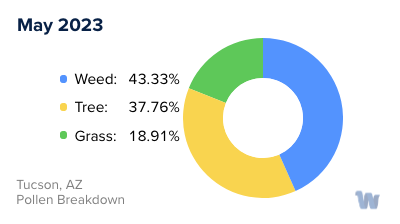


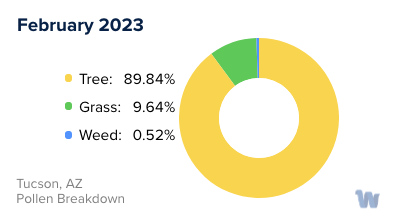
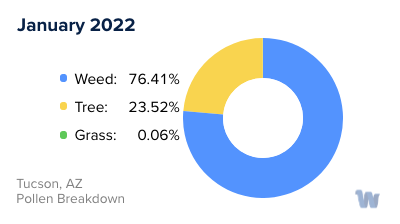
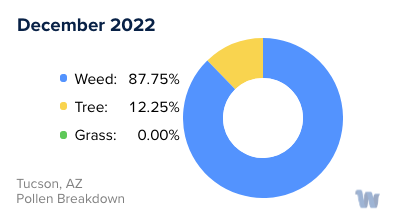
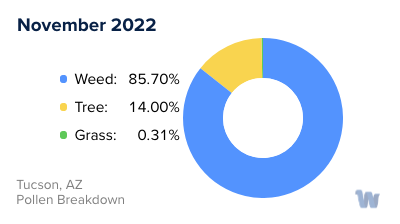
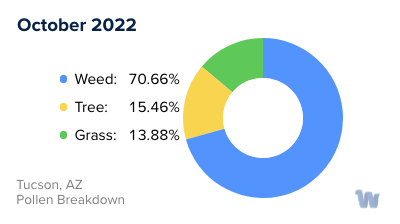

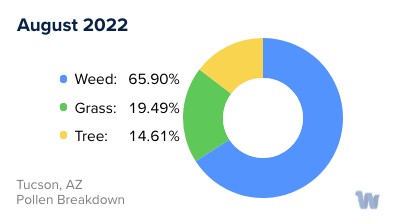
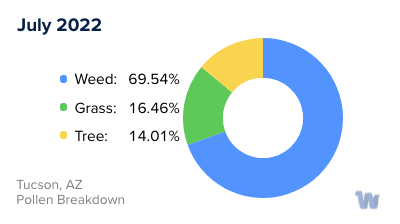


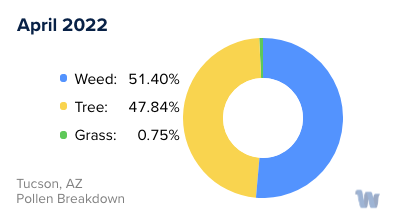

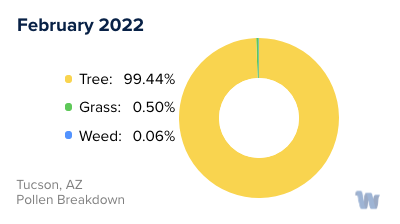
Pollen and Hay Fever in Tucson, AZ
In the sun-kissed city of Tucson, Arizona, residents and visitors alike can revel in the stunning desert landscapes. However, for those with pollen allergies, Tucson's unique flora can be a double-edged sword.
Pollen allergies, often referred to as hay fever, are a common ailment in Tucson. Hay fever is essentially an allergic reaction to pollen, a powdery substance released by plants for fertilization. This reaction can cause a plethora of symptoms such as sneezing, a runny nose, and itchy eyes.
In Tucson, there are several types of pollen that are particularly prevalent. One of the major contributors to pollen allergies in the area is the mesquite tree. Mesquite trees are abundant in Tucson and release their pollen primarily in the late spring and early summer. Another significant source of pollen is the palo verde tree, which typically pollinates in the spring. This tree’s bright yellow flowers are not just a feast for the eyes but also a cause of sneezing for many.
Moreover, grasses such as Bermuda grass release pollen mainly during the late spring and early summer, contributing to the pollen count. During the monsoon season, which generally runs from July through September, the moisture can cause an increase in mold spores, which, although not pollen, can exacerbate hay fever symptoms for some individuals.
It's also worth mentioning that desert ragweed, which is common in the Tucson area, releases its pollen in the late summer and fall. This plant is notorious for causing allergic reactions and is a significant source of hay fever symptoms.
Being aware of the types of pollen and the seasons in which they are most prevalent in Tucson is key to understanding and managing pollen allergies in this beautiful desert city.

